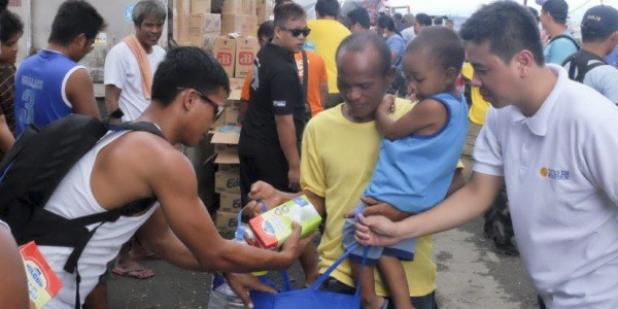
21 November Update on CCCM in the Philippines
As of 21 November, DSWD places the number of persons affected by Typhoon Haiyan at 12.3 million. Although this figure has decreased in recent days, the number of displaced persons has increased to 4.3 million. Remote areas are still difficult to access due to debris on the roads. Airport congestion at Tacloban airport is easing, however, and ferry services between Matnog (Bicol region) and Allen (Eastern Visayas region) have added four barges to transport passengers and vehicles.
90 per cent of displaced people are in Eastern and Western Visayas regions. 387,000 displaced persons are located in 1,554 evacuation centres. Overcrowding in evacuation centers continues to be a problem, particularly in the Eastern Visayas. In Tacloban, the two largest evacuation centers, the Astrodome and San Jose Elementary School, are hosting over 10,000 people alone. Such overcrowding presents significant risks to the health and wellbeing of evacuation center residents. In addition, 22 of Tacloban’s evacuation centers are reporting a continued lack of electricity, as well as inadequate drainage and waste management facilities.
One important development is that many people are leaving the evacuation centres, returning to their land, and building makeshift shelters next to their damaged houses. This highlights the problem of overcrowding and poor conditions in the centres, as well as the mobility and determination of affected persons to begin the reconstruction process. This trend is expected to increase as school is scheduled to restart on Monday in some areas, meaning the closure of some evacuation centres will be required.
The CCCM Cluster has identified water, food, mosquito nets, blankets and hygiene kits as immediate priority needs both in displacement sites, and in order to facilitate eventual returns to affected homes and areas. In addition, the shelter materials currently available are insufficient. In response, the CCCM Cluster arranged a convoy of 8 trucks, which arrived in Tacloban on 19 November to deliver shelter kits to evacuation centers. Over the past few days, the Cluster delivered 5,000 blankets, 6,000 corrugated iron sheets for shelter, six chainsaws, 5,000 fixing/toolkits, 1,300 framing kits (bamboo), 2,580 family emergency shelter kits, and 4,500 sakoline sheets to individuals in need. Finally, the CCCM Cluster has activated its Displacement Tracking Matrix in 41 sites in Tacloban and Roxas. This tool will provide crucial information on the priorities and needs of 15,000 individuals to humanitarian partners as returns and onward movements continue to increase.
Looking forward, the identification of viable and safe land for resettlement sites is a top priority for the Cluster. Emergency preparedness and response is an additional priority in case of further serious weather events (e.g. monsoons).
For more information on these and other response activities, please see the attached and visit http://philippineresponse.iom.int/.
